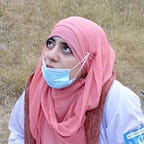Let’s talk toothbrushes!
Wanna know which toothbrush is best? Read on to find out (and more).
The most common question I get asked regarding oral hygiene is ‘which toothbrush/toothpaste is best?’ We’ll cover toothpaste some other day but today I decided to sit down and answer all the most frequently asked toothbrush related queries.
Starting with the most popular one:
How do I choose the right toothbrush?
So the two things you need to consider when selecting a toothbrush are:
1) its size
2) coarseness of its bristles.
The size of the head of the toothbrush should be small enough to access the posterior-most teeth in your mouth. Ideally, for most adults, it should measure 1/2 an inch in width and 1 inch in height.
Always go for a soft-bristled toothbrush, because medium to hard bristles when coupled with an aggressive brushing technique can cause excessive tooth wear.
The Manual Vs Powered Debate: which is better?
The answer: there’s no clear winner.
Extensive research has been done comparing both varieties and it has been concluded that in terms of plaque control, and oral health both types of brushes have similar effectiveness.
I suggest choosing whichever brush you prefer and feel comfortable using. What matters is that you’re brushing twice a day, every day, for 2 mins and that you’re using the recommended technique (refer below).
How often should I change my toothbrush?
The general lifespan of a toothbrush is about 3–4 months. This might vary for some people, depending on how aggressively they brush. If your toothbrush looks like someone sat on it, this is an indication that you should have discarded it weeks ago.
I also recommend changing your toothbrush after recovering from a cold/flu. The throat germs may remain on your toothbrush and cause you to become sick again.
How do I clean my toothbrush?
Some people are overly concerned about proper toothbrush hygiene. A toothbrush doesn’t really need ‘cleaning’. Just make sure to rinse it after use and then let it air dry. This means no caps; covering a wet toothbrush just gives bacteria an ideal, humid environment to grow and fester.
One more thing: when it comes to toothbrushes sharing is most definitely not caring! So please, use your own.
Should I brush before or after flossing?
According to the American Dental Association (ADA), the order does not matter, so long as you’re doing both and properly.
Finally, coming to the last question:
What is the proper brushing technique?
There are several brushing techniques but I’ll share below the one that is easiest to follow and ADA recommended.
Again, make sure that you’re brushing twice daily for 2 minutes minimum, using a good quality fluoride toothpaste.
Happy brushing! 😊
